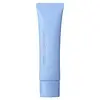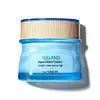What's inside
What's inside
 Key Ingredients
Key Ingredients

 Benefits
Benefits

 Concerns
Concerns

 Ingredients Side-by-side
Ingredients Side-by-side

Cyclopentasiloxane
EmollientGlycerin
HumectantPropanediol
SolventDimethicone/Vinyl Dimethicone Crosspolymer
Skin ConditioningWater
Skin ConditioningDimethicone
EmollientSodium Hyaluronate
HumectantSodium Acrylate/Sodium Acryloyldimethyl Taurate Copolymer
Emulsion StabilisingFomes Officinalis Extract
Skin ProtectingCitrus Limon Peel Oil
MaskingCitrus Aurantium Bergamia Peel Oil
Citrus Aurantium Dulcis Peel Oil
MaskingCitrus Aurantifolia Oil
CleansingPinus Sylvestris Leaf Oil
MaskingEucalyptus Globulus Leaf Oil
PerfumingDimethylimidazolidinone Rice Starch
AbsorbentBetula Platyphylla Japonica Juice
Skin ConditioningRosa Damascena Flower Water
MaskingZea Mays Starch
AbsorbentCamellia Sinensis Leaf Extract
AntimicrobialAspalathus Linearis Leaf Extract
Skin ConditioningRosmarinus Officinalis Leaf Extract
AntimicrobialJasminum Officinale Extract
MaskingMentha Piperita Leaf Extract
Skin ConditioningIsohexadecane
EmollientSilica
AbrasiveBetaine
HumectantPolysorbate 80
EmulsifyingSorbitan Oleate
EmulsifyingTriethoxycaprylylsilane
Disodium EDTA
Phenoxyethanol
PreservativeChlorphenesin
AntimicrobialCaprylyl Glycol
EmollientEthylhexylglycerin
Skin ConditioningParfum
MaskingLimonene
PerfumingLinalool
PerfumingButylphenyl Methylpropional
PerfumingCyclopentasiloxane, Glycerin, Propanediol, Dimethicone/Vinyl Dimethicone Crosspolymer, Water, Dimethicone, Sodium Hyaluronate, Sodium Acrylate/Sodium Acryloyldimethyl Taurate Copolymer, Fomes Officinalis Extract, Citrus Limon Peel Oil, Citrus Aurantium Bergamia Peel Oil, Citrus Aurantium Dulcis Peel Oil, Citrus Aurantifolia Oil, Pinus Sylvestris Leaf Oil, Eucalyptus Globulus Leaf Oil, Dimethylimidazolidinone Rice Starch, Betula Platyphylla Japonica Juice, Rosa Damascena Flower Water, Zea Mays Starch, Camellia Sinensis Leaf Extract, Aspalathus Linearis Leaf Extract, Rosmarinus Officinalis Leaf Extract, Jasminum Officinale Extract, Mentha Piperita Leaf Extract, Isohexadecane, Silica, Betaine, Polysorbate 80, Sorbitan Oleate, Triethoxycaprylylsilane, Disodium EDTA, Phenoxyethanol, Chlorphenesin, Caprylyl Glycol, Ethylhexylglycerin, Parfum, Limonene, Linalool, Butylphenyl Methylpropional
Water
Skin ConditioningGlycerin
HumectantDipropylene Glycol
HumectantHydrogenated Polydecene
EmollientDicaprylyl Carbonate
EmollientVinyldimethicone
Pentaerythrityl Tetraethylhexanoate
EmollientCetearyl Olivate
Glyceryl Stearate
EmollientSorbitan Olivate
EmulsifyingPanthenol
Skin ConditioningTriethylhexanoin
MaskingButylene Glycol
HumectantAdenium Obesum Leaf Extract
Skin ConditioningVaccinium Angustifolium Fruit Extract
Skin ProtectingVaccinium Macrocarpon Fruit Extract
AstringentCetraria Islandica Extract
CleansingLaminaria Digitata Extract
Skin ProtectingPseudoalteromonas Ferment Extract
HumectantPropanediol
SolventAphanothece Sacrum Exopolysaccharides
AbsorbentGlyceryl Caprylate
EmollientXanthan Gum
EmulsifyingCyclohexasiloxane
EmollientCetearyl Alcohol
EmollientButyrospermum Parkii Butter
Skin ConditioningBeeswax
Emulsion StabilisingHydroxyacetophenone
AntioxidantCarbomer
Emulsion StabilisingTromethamine
BufferingGlycosyl Trehalose
Emulsion StabilisingHydrogenated Starch Hydrolysate
HumectantCitrus Aurantium Dulcis Peel Oil
MaskingDimethicone/Vinyl Dimethicone Crosspolymer
Skin ConditioningCitrus Aurantium Bergamia Fruit Oil
MaskingLavandula Angustifolia Oil
MaskingAmyris Balsamifera Bark Oil
MaskingPelargonium Graveolens Flower Oil
MaskingMelaleuca Alternifolia Leaf Oil
AntioxidantCitrus Paradisi Peel Oil
MaskingEucalyptus Globulus Leaf Oil
PerfumingJuniperus Mexicana Oil
MaskingBoswellia Carterii Oil
MaskingDipotassium Glycyrrhizate
HumectantDisodium EDTA
Caprylyl Glycol
Emollient1,2-Hexanediol
Skin ConditioningWater, Glycerin, Dipropylene Glycol, Hydrogenated Polydecene, Dicaprylyl Carbonate, Vinyldimethicone, Pentaerythrityl Tetraethylhexanoate, Cetearyl Olivate, Glyceryl Stearate, Sorbitan Olivate, Panthenol, Triethylhexanoin, Butylene Glycol, Adenium Obesum Leaf Extract, Vaccinium Angustifolium Fruit Extract, Vaccinium Macrocarpon Fruit Extract, Cetraria Islandica Extract, Laminaria Digitata Extract, Pseudoalteromonas Ferment Extract, Propanediol, Aphanothece Sacrum Exopolysaccharides, Glyceryl Caprylate, Xanthan Gum, Cyclohexasiloxane, Cetearyl Alcohol, Butyrospermum Parkii Butter, Beeswax, Hydroxyacetophenone, Carbomer, Tromethamine, Glycosyl Trehalose, Hydrogenated Starch Hydrolysate, Citrus Aurantium Dulcis Peel Oil, Dimethicone/Vinyl Dimethicone Crosspolymer, Citrus Aurantium Bergamia Fruit Oil, Lavandula Angustifolia Oil, Amyris Balsamifera Bark Oil, Pelargonium Graveolens Flower Oil, Melaleuca Alternifolia Leaf Oil, Citrus Paradisi Peel Oil, Eucalyptus Globulus Leaf Oil, Juniperus Mexicana Oil, Boswellia Carterii Oil, Dipotassium Glycyrrhizate, Disodium EDTA, Caprylyl Glycol, 1,2-Hexanediol
Alternatives
Ingredients Explained
These ingredients are found in both products.
Ingredients higher up in an ingredient list are typically present in a larger amount.
Caprylyl Glycol is a humectant and emollient, meaning it attracts and preserves moisture.
It is a common ingredient in many products, especially those designed to hydrate skin. The primary benefits are retaining moisture, skin softening, and promoting a healthy skin barrier.
Though Caprylyl Glycol is an alcohol derived from fatty acids, it is not the kind that can dry out skin.
This ingredient is also used as a preservative to extend the life of products. It has slight antimicrobial properties.
Learn more about Caprylyl GlycolCitrus Aurantium Dulcis Peel Oil is oil from the peel of an orange fruit.
Limonene and linalool make up the majority of oils from citrus peels. Limonene has a "citrus" fragrance. Citrus peels also contain flavonoids, which have anti-inflammatory properties.
Citrus peel is also a rich source of flavonoids. Flavonoids are natural antioxidants and help protect your skin against damage. Flavonoids are a group of compounds naturally found in vegetables and fruits.
The term 'fragrance' is not regulated in many countries. In many cases, it is up to the brand to define this term. For instance, many brands choose to label themselves as "fragrance-free" because they are not using synthetic fragrances. However, their products may still contain ingredients such as essential oils that are considered a fragrance.
Learn more about Citrus Aurantium Dulcis Peel OilThis ingredient is a silicone used to improve the texture of products and absorb oil. It does not get absorbed into the skin.
Like other silicones, Dimethicone/Vinyl Dimethicone Crosspolymer helps condition the skin by creating a barrier. In this sense, it can act as an emollient and trap moisture in.
This ingredient is a type of elastomer.
Learn more about Dimethicone/Vinyl Dimethicone CrosspolymerDisodium EDTA plays a role in making products more stable by aiding other preservatives.
It is a chelating agent, meaning it neutralizes metal ions that may be found in a product.
Disodium EDTA is a salt of edetic acid and is found to be safe in cosmetic ingredients.
Learn more about Disodium EDTAThis oil is derived from the leaves of Eucalyptus Globulus, a type of Eucalyptus tree native to Australia.
Though this oil shows antibacterial and antioxidant activity, it is also a known skin-irritant due to its fragrance components.
Glycerin is already naturally found in your skin. It helps moisturize and protect your skin.
A study from 2016 found glycerin to be more effective as a humectant than AHAs and hyaluronic acid.
As a humectant, it helps the skin stay hydrated by pulling moisture to your skin. The low molecular weight of glycerin allows it to pull moisture into the deeper layers of your skin.
Hydrated skin improves your skin barrier; Your skin barrier helps protect against irritants and bacteria.
Glycerin has also been found to have antimicrobial and antiviral properties. Due to these properties, glycerin is often used in wound and burn treatments.
In cosmetics, glycerin is usually derived from plants such as soybean or palm. However, it can also be sourced from animals, such as tallow or animal fat.
This ingredient is organic, colorless, odorless, and non-toxic.
Glycerin is the name for this ingredient in American English. British English uses Glycerol/Glycerine.
Learn more about GlycerinPropanediol is an all-star ingredient. It softens, hydrates, and smooths the skin.
It’s often used to:
Propanediol is not likely to cause sensitivity and considered safe to use. It is derived from corn or petroleum with a clear color and no scent.
Learn more about PropanediolWater. It's the most common cosmetic ingredient of all. You'll usually see it at the top of ingredient lists, meaning that it makes up the largest part of the product.
So why is it so popular? Water most often acts as a solvent - this means that it helps dissolve other ingredients into the formulation.
You'll also recognize water as that liquid we all need to stay alive. If you see this, drink a glass of water. Stay hydrated!
Learn more about Water